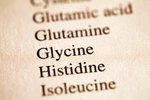Probios, or probiotics, are administrated to pets, farm animals and even people for digestion problems. When given to calves, they are usually for treatment of calf scours or diarrhea. Studies are mixed on the effectiveness of probiotic treatment. A University of Illinois study suggests it might be effective in calves facing heat stress. Information on how often to give probios to calves can be usually be found on technical sheets inserted in the product package or on the product label.
Disease Description
Scours are diarrhea caused by bacterial and viral infections of calves. Diarrhea ranges from moderate to severe and if not treated immediately, death can result. In addition to diarrhea, symptoms of scours are dehydration and depression. Dehydration occurs because bacteria and viruses destroy the lining of the small intestine, causing large amounts of fluid loss. Some types of scours occur in newborn to 7-day-old calves while other types infect calves 8 to 21 days old.
Treatment Protocol
Administer 5 cubic centimeters (cc) of probios orally to calves either as a gel or paste immediately upon observance of diarrhea. The next day, give another 5 cc dose. On the third day, add 2.5 to 5 grams of probiotic to the milk or milk replacer, splitting the dose evenly between the morning and evening feedings. Continue this treatment daily until the calves are weaned.
Dosing Equipment
Dosing equipment should be available where the probiotics are sold. Gel and paste applicator guns consist of a handle with a squeeze trigger and a plunger. A 300 cc gel cartridge attaches to the gun with a twist lock. The gun is calibrated to dispense a 5 cc dose with each squeeze of the trigger, but can be adjusted for 10 cc or 15 cc. Most dial-a-dose tubes have a knob on the end of the plunger that is turned to notches on the plunger stem. Each notch represents a different dose. Push the plunger into the cylinder to dispense the probio gel or paste. To administer probios, gently insert the tip of the applicator tube into the calf's mouth between the tongue and teeth.
Probiotic Content
Probiotics are primarily designed to improve the calf's digestive system by supplying rumen bacteria that promote breakdown and assimilation of feed nutrients. Probios also contain vitamins C and E to enhance antioxidants, and sucrose to provide an energy source.
References
Photo Credits
-
Jupiterimages/BananaStock/Getty Images





